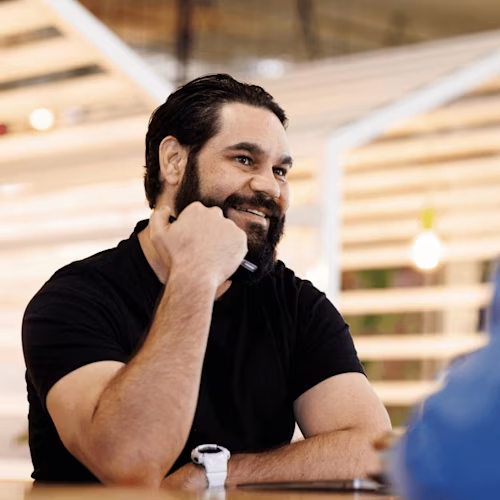
How to become a truly customer-centric business, and why it matters
One of Docusign’s most customer-obsessed leaders, Tanya Faddoul, shares her tips on putting customers at the centre of your business.
Table of contents

Gartner defines customer centricity as “the ability of people in an organisation to understand customers’ situations, perceptions and expectations. Customer centricity demands that the customer is the focal point of all decisions related to delivering products, services and experiences to create customer satisfaction, loyalty and advocacy.”
Making the customer the focal point of all your business decisions makes complete sense. Without your customers, you cease to exist. Plain and simple. But dig a little deeper and it becomes clear that customers don’t just keep you afloat today – they propel you into the future.
Question is, how do you foster a culture of customer centricity? How do you realise new value from customer relationships, not just to keep today’s customers happy but to identify and act upon what customers of tomorrow might want?
To find out, we spoke to one of our most customer-obsessed leaders at Docusign, Tanya Faddoul. Tanya is Docusign’s Vice President of Product Management, and works with one foot firmly in the customer’s camp, and the other in our product space.
According to Tanya, customer centricity is all about collaboration. Or, as Tanya emphasises, “deep collaboration”.
“Deep collaboration leads to understanding and the identification of patterns. It leads to a diversity of ideas. And, importantly, it leads to innovation. Working closely with customers brings out the best in both of you,” she says. Connecting the dots between what you offer and what your customers want helps to hold you accountable. Oh, and it helps drive revenue.
Tanya gives the example of a US-based healthcare company Maven, a virtual provider of critical health services across fertility, pregnancy, adoption, parenting and pediatrics. Initially established to improve employee healthcare benefits in B2B settings, the company could see that, during COVID, many pregnant women were suffering anxious moments throughout their pregnancy through lack of face-to-face care. So Maven pivoted to a B2C offering, which would give more women better access to maternal healthcare.
Maven is just one of many companies that listened to their customers during the pandemic and changed lanes in response (for more inspiring stories like theirs, check out this Forbes article on some of the most customer-centric organisations out there).
Key steps in becoming more customer centric
Working closely with customers, which is what we do at Docusign, is just one step in becoming customer centric. Another is tapping into the power of data. From NPS scores to survey results, from community forums to ‘voice of customer’ activities, data is an invaluable asset on the path to customer centricity.
Data helps you understand the wants and needs of your market. It can help rein in those big and fantastical ideas that end up being the downfall of some entrepreneurial types; and it can help loosen loyal ties to a product or service you created years ago. Data gives you the objectivity you need to focus on what matters to your customers.
And another step? Flipping the funnel, so to speak, to put customers at the very top of your value chain. Take Nordstrom. The retail giant is famed for its customer centricity, and it all stems from a service-driven mentality that’s echoed from Nordstrom’s leadership team right through to people on the shop floor. As Tanya says, “It’s a totally different methodology than the imperialist model, where leaders are focused on what they can gain. If you turn inward on personal achievement, you lose your path.”
“As the Nordstrom way shows, being a customer first company means attracting people who are passionate and inquisitive, people who can connect the dots on behalf of customers and really align on what your customers want,” says Tanya.
Never stop listening
No matter how brilliant your business is today, tomorrow is another matter. “Always listen to your customers, so you don’t end up being surpassed in a competitive world,” says Tanya.
“And, I feel that it’s important to be really corny sometimes. You really need to evangelise how much you love your customers. Then, when you speak to other customers, you’re speaking their language, not yours. You’re making them feel like they’re a part of something and, together, you’re building the future.”
Taking a cue from Tanya, let’s take a moment to express our love for all you customers who take the time to read our blog and explore Docusign’s products. We love you, and we love helping your business thrive.
Docusign IAM is the agreement platform your business needs


